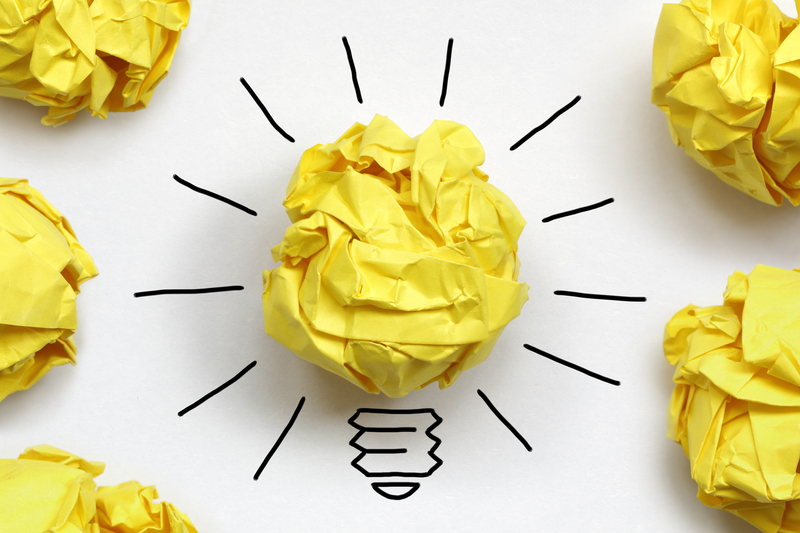Addressing Microplastic Pollution: Our Path Forward
Microplastics have rapidly gained global attention as one of the most insidious threats to environmental health and human well-being. With mounting scientific evidence exposing the extent of contamination and resulting impacts on ecosystems and societies, addressing microplastic pollution has become a critical subject for policymakers, communities, and industries throughout the world. This comprehensive article delves into the origins, impacts, and solutions to microplastic contamination, providing a clear path forward for tackling this issue in a sustainable and effective way.
Understanding Microplastics: Definition and Sources
Microplastics are typically defined as plastic particles less than 5 millimeters in diameter. They originate either through the degradation of larger plastic debris (known as secondary microplastics) or are manufactured directly at a microscopic size, such as microbeads in personal care products (primary microplastics). Their minute size allows them to bypass conventional waste and water treatment systems, rendering microplastic contamination a ubiquitous and persistent challenge.
Major Sources of Microplastic Pollution
- Personal care products: Items such as exfoliating scrubs, toothpaste, and shower gels previously included microbeads.
- Synthetic textiles: When washed, garments made from polyester, nylon, and acrylic can shed microfibers into water systems.
- Tire wear: The friction of car tires on roads produces tiny polymer fragments that enter waterways via runoff.
- Packaging and single-use plastics: Improperly discarded packaging materials break down into numerous microplastic particles over time.
- Paints and road markings: Industrial paints and road stripings degrade, contributing to microplastic release.
Addressing microplastic pollution involves not only understanding these sources but also recognizing the complexity and diversity of plastic particles dispersed throughout various environments.

Ecological and Human Health Impacts of Microplastics
Microplastic Contamination in Marine and Terrestrial Ecosystems
The pervasiveness of microplastics is deeply troubling. Studies have detected microplastic particles from the Arctic ice sheets and remote mountain tops to the deepest trenches of the world's oceans. Terrestrial environments, including agricultural soils and freshwater systems, are equally afflicted.
Marine life is especially vulnerable. Zooplankton, fish, birds, and mammals can ingest microplastics, leading to physical blockages, reduced feeding, and even death. Chemical pollutants adhered to plastic surfaces--such as heavy metals and persistent organic pollutants--can accumulate in tissues, moving up food chains in a process known as biomagnification.
Potential Human Health Risks
- Food chain contamination: Humans may consume microplastics through seafood, table salt, drinking water, and even crops irrigated with contaminated water.
- Toxic chemical exposure: Microplastics can carry endocrine disruptors and carcinogenic substances, posing subtle but significant long-term health risks.
- Respiratory issues: Airborne microplastic fibers--released from textiles and urban pollutants--are increasingly detected in household and atmospheric dust, raising concerns about inhalation.
While research into health effects is ongoing, one thing is clear: addressing microplastic pollution is as much about safeguarding human well-being as it is about preserving environmental integrity.
Challenges in Tackling Microplastic Pollution
Detection, Monitoring, and Regulation
Despite increased awareness, significant obstacles remain in microplastic pollution management:
- Detection: Microplastics are difficult to track due to their minute size and chemical diversity.
- Standardization: Lack of globally accepted definitions and testing methodologies complicates comparative studies and regulation.
- Regulatory gaps: Legislative frameworks for managing microplastics are still underdeveloped in many regions.
For any path forward to be successful, improved detection techniques, international collaboration, and harmonized regulations are essential.
Addressing Microplastic Pollution: Practical Solutions and Policy Initiatives
Reducing Microplastic Pollution at the Source
A collective approach is needed to address the sources of microplastic pollution. Prevention is far more effective and less expensive than remediation. Here are strategies at the core of our path forward:
- Ban on microbeads: Many countries have outlawed microbeads in rinse-off cosmetic products, a significant primary microplastic source.
- Textile innovation: Promoting the development and use of fabrics that shed fewer fibers, alongside household filtration technologies that capture microfibers.
- Product stewardship: Encouraging manufacturers to take responsibility for the environmental impact of their products through design improvements and end-of-life recycling programs.
- Improved waste management: Implementing more robust recycling and waste treatment infrastructures to prevent plastics from entering natural environments.
Public Awareness and Behavioral Change
Engaging the public is vital in addressing microplastic pollution. Campaigns and educational programs can spur:
- Reduction of single-use plastics: Promoting reusable alternatives and responsible disposal practices.
- Proper laundering habits: Advising on full loads, cooler wash temperatures, and the use of filters to reduce microfiber shedding.
- Community clean-ups: Mobilizing local efforts to remove plastic waste from urban and natural settings before it fragments into microplastics.
Innovative Technologies and Solutions
Scientific innovation offers promising opportunities for microplastic pollution solutions:
- Advanced filtration systems: Developing efficient filters for washing machines, industrial facilities, and wastewater treatment plants.
- Biodegradable alternatives: Investment in the research and commercialization of bioplastics and truly compostable materials.
- Plastivore organisms: Exploring the prospects of microorganisms and enzymes that help break down certain types of plastics, although these require careful management to avoid ecological risks.
- Remote sensing and AI: Improving the detection and mapping of microplastic concentration zones via satellites, drones, and data-driven platforms.
Global Policies and Collaborative Efforts
International collaboration is the cornerstone of long-term, sustainable microplastic management.
Key Policy Initiatives Underway
- United Nations Environment Assembly (UNEA): The UNEA is driving discussions for a global treaty on plastic pollution, which will establish binding measures on microplastic reduction, monitoring, and reporting.
- European Union Plastics Strategy: The EU has implemented directives to eliminate single-use plastics, reduce microplastics from specific products, and promote closed-loop recycling systems.
- National bans and regulations: Countries such as the United States, UK, Canada, and several Asian states have adopted or proposed bans on microbeads, as well as broader measures to curtail microplastic pollution from clothing, tires, and other sectors.
- NGO-led initiatives: Non-governmental organizations are pushing for public-private partnerships, clean-up campaigns, and educational drives to foster a culture of responsibility and innovation.
*Effective action requires harmonized standards, transparent reporting, and inclusive participation from all sectors of society--including industry, academia, government agencies, and engaged citizens.*
The Role of Scientific Research in Shaping Our Path Forward
Ongoing and future research will be essential in expanding our understanding of microplastic pollution impacts and guiding effective interventions. Science-based policymaking informs regulations, inspires public trust, and drives innovation. Key scientific priorities include:
- Developing rapid detection and quantification methods for microplastics in air, water, and food systems.
- Elucidating the health impacts of chronic exposure to microplastics and their chemical additives.
- Assessing the effectiveness and ecological safety of remediation technologies, such as bioremediation and advanced filtration.
- Modeling the transport and fate of microplastics in interconnected ecosystems.
By refining scientific knowledge and communicating findings clearly, we empower decision-makers and communities to choose the best strategies to curb microplastic pollution.

Our Path Forward: A Holistic and Multi-Stakeholder Approach
Collaboration is Key
No single group can overcome the multifaceted challenge of microplastic pollution on its own. *A holistic approach demands collaboration across borders and industries*. The following pillars must fortify our collective path forward:
- Stronger regulations and enforcement: Governments must set ambitious, clear targets for microplastic reduction and ensure compliance through incentives, penalties, and ongoing assessment.
- Corporate accountability and eco-design: Businesses should integrate circular economy principles and adopt life-cycle assessments to minimize microplastic contributions.
- Community activism and education: Grassroots movements, youth advocates, and educators play a crucial role in driving public support and sustainable behavior change.
- Investing in research and innovation: Funding for interdisciplinary research and the scaling of proven technologies is an investment in our planet's future.
The Vision for a Microplastic-Free Environment
Envisioning a future free from microplastic pollution may seem daunting, but it is both an environmental and ethical imperative. By transforming our relationship with plastics--shifting away from disposable culture, embracing sustainable consumption, and restoring our ecosystems--*we can forge a cleaner, safer, more resilient world for generations to come.*
Conclusion: Joining Forces to Address Microplastic Pollution
Microplastic pollution is not a distant or isolated problem; it is a shared challenge that requires immediate, coordinated action worldwide. Addressing microplastic pollution and forging a robust path forward demands the combined efforts of individuals, communities, industries, governments, and the scientific community.
Through innovation, policy, collaboration, and public engagement, we can significantly reduce microplastic contamination and mitigate its effects. The time to act is now--our choices over the coming decade will shape the health of our planet and ourselves.
Let us all commit--today--to being part of the solution, advancing toward a cleaner, microplastic-free future.